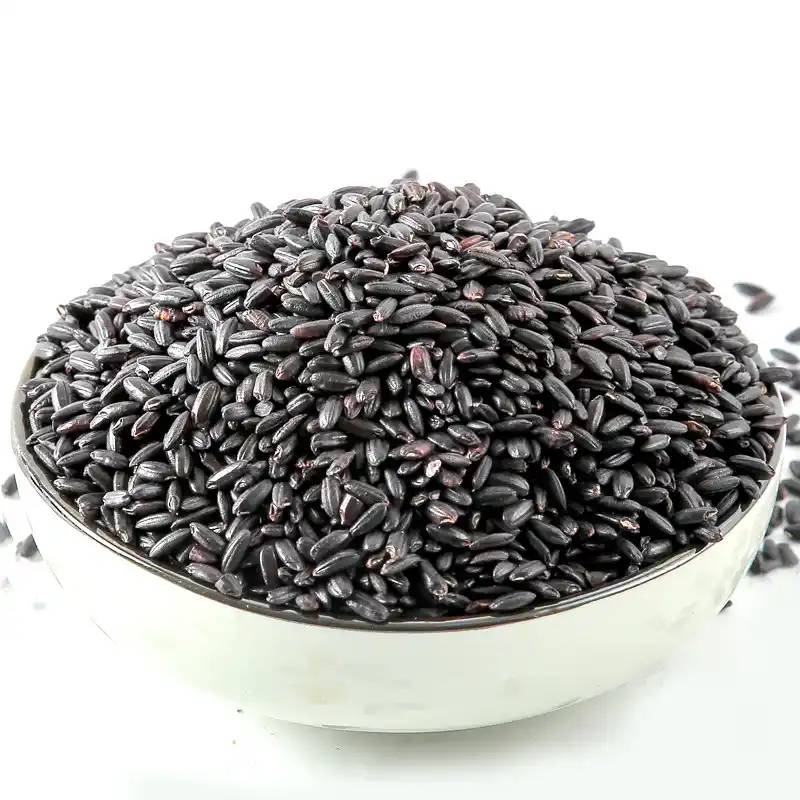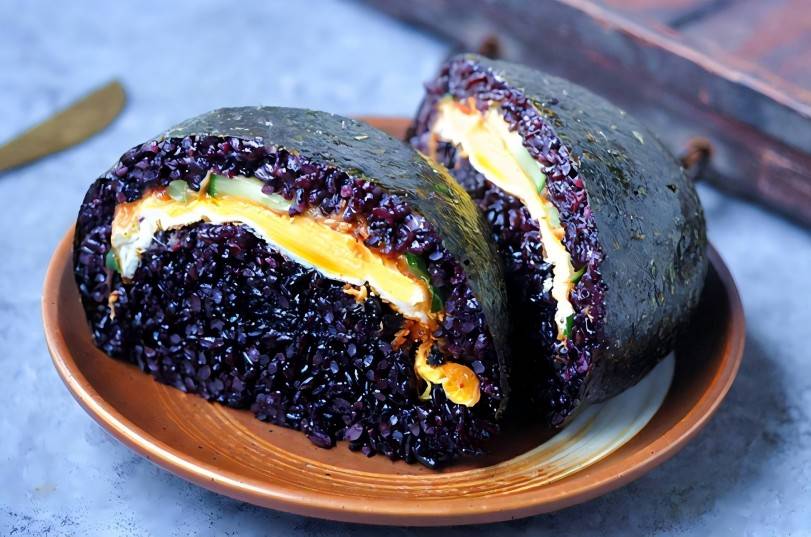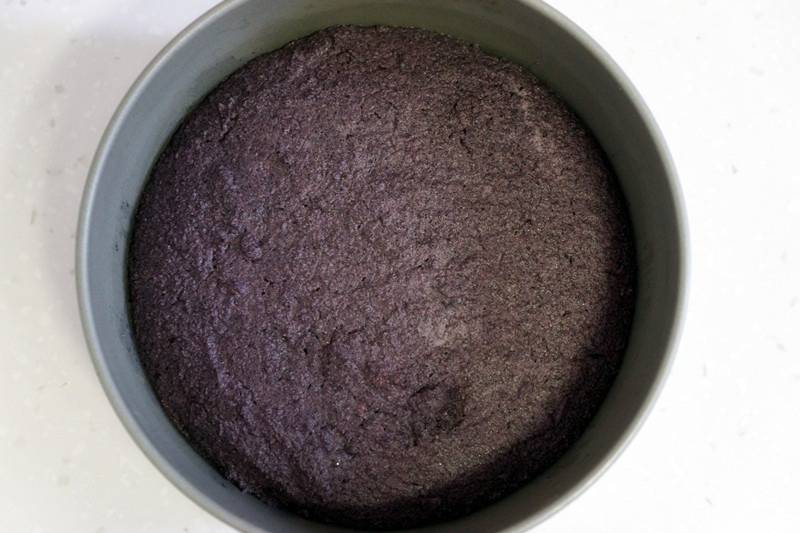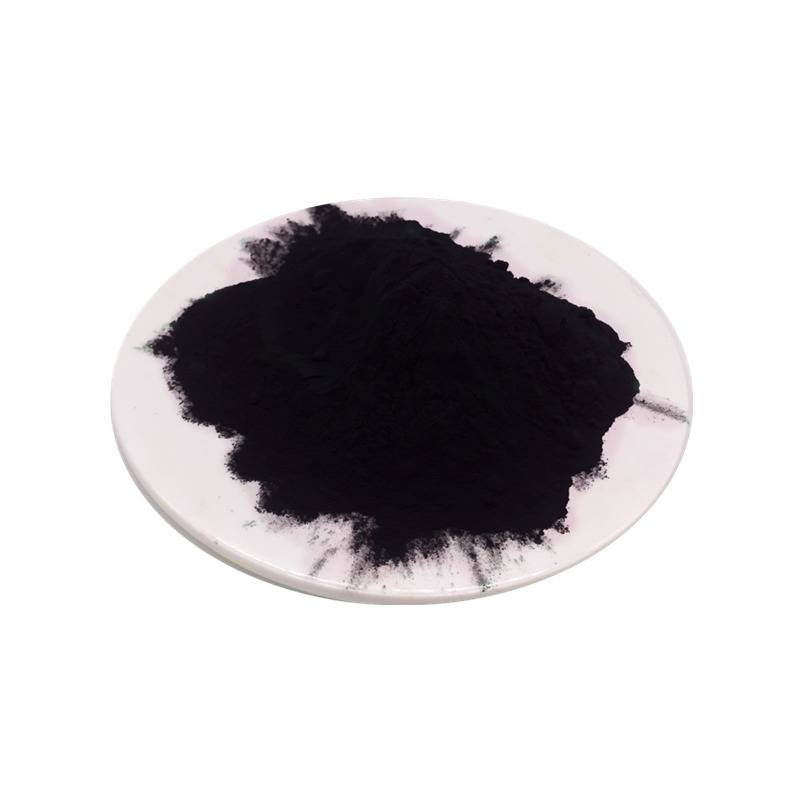Natural Black Rice Elevates Innovation in Health Products
Against the backdrop of growing health-conscious consumption trends, natural, nutritious, and functional attributes have become key drivers of innovation in the food industry。 Specialty rice varieties such as に対して黒米 and purple rice are attracting increasing attention from consumers and research institutions due to their significantly higher overall nutritional value compared to common rice.
As a traditional food-medicine dual-use ingredient, black rice is rich in bioactive compounds like anthocyanins and polysaccharides. Renowned as “blood-nourishing rice” and “divine rice,” it demonstrates unique advantages in enhancing antioxidant capacity and improving physical constitution. With growing market recognition, its applications have expanded beyond traditional staples into nutritional supplements, functional foods, and other sectors.
グリーン春 Technology leverages its deep expertise in raw material R&でD and supply chain capabilities to consistently deliver high-quality black rice powder and black rice extract ingredients. These products retain black rice's natural bioactive components and feature excellent water solubility, strong stability, and broad applicability. They can be widely used in innovative products such as grain beverages, nutrition bars, health capsules, and functional baked goods.
Green Spring Technology is committed to providing food enterprises with safe, compliant, and efficient natural ingredient solutions, accelerating clients' health product innovation and jointly advancing the nutritional food industry upgrade. Explore our comprehensive standardized black rice extract ingredient solutions to infuse your products with stable competitiveness.

1 Natural Black Rice Ingredients Infuse Modern Health Products with Natural Energy
Recent nutritional research confirms that black rice significantly outperforms ordinary white rice in nutritional value. Rich in essential nutrients and containing multiple unique bioactive components, it stands as an ideal raw material choice for developing functional foods and health products.
1.1 Distinct Nutritional Advantages with Prominent Core Components
Compared to regular white rice, black rice contains 1.25–1.51 times more protein, 1.56–2.96 times more fat, and 1.8–3.45 times more unsaturated fatty acids. Its lowest fat content even approaches the highest level found in white rice.
More importantly, black rice is rich in several special nutrients, including:
・Abundant minerals: Calcium, iron, zinc, selenium, and other minerals are generally higher than in white rice, with selenium content reaching 2.07 times that of white rice
・Complete essential amino acids: Except for threonine, all other essential amino acids exceed white rice by more than 100%, with particularly high levels of tryptophan, methionine, and valine
· Unique bioactive compounds: Contains anthocyanins, flavonoids, phenolic compounds, and vitamin C—not detected in white rice—with flavonoid content exceeding white rice by over 500%
1.2 Active Components Empower Product Innovation
Anthocyanins (0.65–14.98 mg/kg), the most significant functional component in black rice, not only impart its distinctive color but also provide potent antioxidant properties. Additionally, black rice contains provitamin A (carotenoids), vitamin B1 (1.91 times that of white rice), vitamin B2 (2.79 times that of white rice), and vitamin C (23.93mg/kg, undetectable in white rice). These components collectively form the foundation of black rice's health benefits.
Broad Application Prospects
Given its rich nutritional profile and bioactive compounds, black rice extract serves as an excellent raw material for developing functional foods, dietary supplements, and health beverages, particularly suitable for:
· Antioxidant functional products
· Dietary supplements
· Natural pigment applications
Green Spring Technology employs advanced extraction techniques to maximize the retention of bioactive components in black rice, providing customers with high-quality black rice extract raw materials to support innovation and upgrading in health products.
2 Natural Ingredients: Black Rice Extract Drives Health Product Innovation
In recent years, black rice has garnered significant attention as a natural health ingredient. Its core functional components—anthocyanins and polysaccharides—are emerging as key drivers of health product innovation due to their unique biological activity and application potential. Leveraging modern extraction technology, Green Spring Technology achieves efficient extraction and standardized production of black rice functional components, providing the industry with stable, high-quality natural ingredient solutions.
2.1 Highly Active Anthocyanins: Natural Antioxidants Empowering Diverse Health Products
玄米アントシアニン represent its most iconic functional component. Research demonstrates their exceptional antioxidant properties, lipid-regulating effects, and anti-inflammatory activities. Liquan Technology employs low-temperature extraction processes like ultrasonic-assisted extraction and supercritical fluid technology. This approach effectively preserves anthocyanin bioactivity while preventing degradation caused by high temperatures. The company now provides standardized and stable supplies of black rice anthocyanin extracts. These products can be widely used in functional foods, dietary supplements, and natural pigment development, infusing natural energy into product innovation.
2.2 Distinctive Black Rice Polysaccharides: Unique Properties Expand Health Applications
Black rice polysaccharides (primarily starch) exhibit significant differences from regular rice in terms of amylose content and viscosity characteristics. Varieties like black japonica rice, black indica rice, and black glutinous rice demonstrate diverse properties in gelatinization, gel stability, and anti-aging effects, opening new possibilities for health food innovation. Through enzymatic-assisted extraction and other processes, Green Spring Technology continuously explores efficient extraction and functional applications of black rice polysaccharides. Plans include integrating them into medical foods, functional beverages, and texture-improved products, further expanding the application boundaries of natural ingredients.
2.3 Technology-Driven Innovation: Advancing Black Rice Component Development
Green Spring Technology has overcome multiple challenges in extracting functional components from black rice through process breakthroughs:
· Mild extraction processes effectively preserve heat-sensitive active components, enhancing product potency;
· Optimized workflows improve extraction efficiency, supporting cost control and large-scale application;
· Standardized quality control systems ensure batch consistency and reliability of raw materials.
Currently, Green Spring Technology's black rice anthocyanin extract has achieved large-scale production with stable supply. Collaborative research with scientific institutions on black rice polysaccharides continues to explore its health potential and application value.

3 Innovative Breakthroughs in Comprehensive Black Rice Applications: Diverse Development from Traditional Foods to Health Functional Ingredients
Driven by evolving health consumption demands and food technology advancements, the application of black rice and its bioactive components is rapidly expanding beyond traditional congee into diversified, high-value-added directions. Leveraging deep insights into black rice's nutritional profile and extraction expertise, Green Spring Technology provides innovative ingredient solutions for food and health product enterprises, maximizing black rice's value.
3.1 Innovative Applications in the Food Industry
In recent years, the application of black rice in food processing has far exceeded the traditional confines of porridge. Through varietal improvement and process innovation, modern black rice products have seen significant enhancements in taste and processing adaptability:
· Staple Foods and Bakery: Black rice has been successfully incorporated into products like noodles, rice vermicelli, toast bread, and rice cakes, winning market favor with its unique color and nutritional characteristics.
· Fermented Food Innovations: Fermented black rice beverages, fermented black rice milk, and black rice sauces leverage black rice's nutritional profile. Combined with probiotics and other beneficial ingredients, these products deliver enhanced bioavailability as functional foods.
· Novel Health Foods: Innovative offerings like black rice fiber jellies and edible jellies are emerging. Black rice anthocyanins serve as natural pigments and functional components, providing dual value to products.
3.2 Natural Pigment Solutions
The natural pigments (anthocyanins) abundant in black rice are highly soluble in water and alcohol, enabling stable and uniform dispersion across diverse food systems. Green Spring Technology employs modern extraction techniques to provide customers with:
· High-quality natural black rice pigments suitable for coloring beverages, ice cream, dairy products, and more
· Stabilization processing technology ensuring color stability across varying pH levels and temperatures
· Clean label solutions meeting consumer demand for natural ingredients

3.3 Innovative Ingredients for Health Products
Bioactive compounds in black rice (anthocyanins, flavonoids) open new opportunities for health product development:
· Functional ingredients for dietary supplements, softgels, and similar products
· Natural raw material options for foods for special medical purposes
· Natural nutrient support for sports nutrition and health foods
Green Spring Technology employs advanced extraction techniques and standardized production processes to ensure high retention rates of black rice's active components and product stability, providing comprehensive technical support from raw materials to application.
Looking ahead, as research deepens and technology advances, black rice's application prospects in the food industry and broader health sector will expand significantly. Green Spring Technology looks forward to collaborating with industry partners to explore innovative black rice product development, delivering more premium, healthy black rice series products to consumers.
Contact us at helen@greenspringbio.com or WhatsApp: +86 13649243917 for samples and quotations.
参照:
[1] han longzhi, nam jongho, jeon dongheung, et al。特殊イネの新機軸と栄養特性評価[j]。^『植物遺伝資源誌』2003年4月3日号、207-213頁。
【2】白鶴、馬暁丁、曹吉蘭ほか特殊イネの各品種の栄養成分と機能成分の違い[j]。日本植物遺伝資源学会誌,2017,18(6):1013-1022。
[3]矶山さやかてるでしょ。a review of the pigments and nutrition in purple black rice [j]。2006年(平成18年):7-8号。
【4】郭美、史雲霞。アルコール可溶性法による黒米色素の抽出法に関する研究[j]。2015年食品研究開発、36(8):58-60。
[5] [6] sun zhidong, chen guo, chen huiyun, et al。特殊黒米の特性・開発・利用に関する研究[j]。寧波農業科学技術、2010年(3):18-21。
[7]閔傑、朱志偉、孫成国。黒米の種類と同定に関する議論[j]。2004年(平成16年)4月1日:1往復増発。
[8] Xiong Yanzhen, Huang Zixuan, Ma Huiqin, et al. Research progress on the nutritional function and comprehensive utilization of black rice [J]. Food Industry Science and Technology, 2021, 42 (7): 408-415.
[9] sun z d, zhang f g, lin b, et al。有色米の栄養組成、機能作用、遺伝的特徴[j]。^ a b c d e f『人事興信録』第35版、224-226頁。
-
Prev
Stabilized Black Rice Anthocyanin Ingredients Empower Food Innovation
-
次
How Can Black Rice Extract Anthocyanins Empower the Next Generation of Sports Drinks?


 英語
英語 フランス
フランス スペイン
スペイン ロシア
ロシア 韓国
韓国 日本
日本




